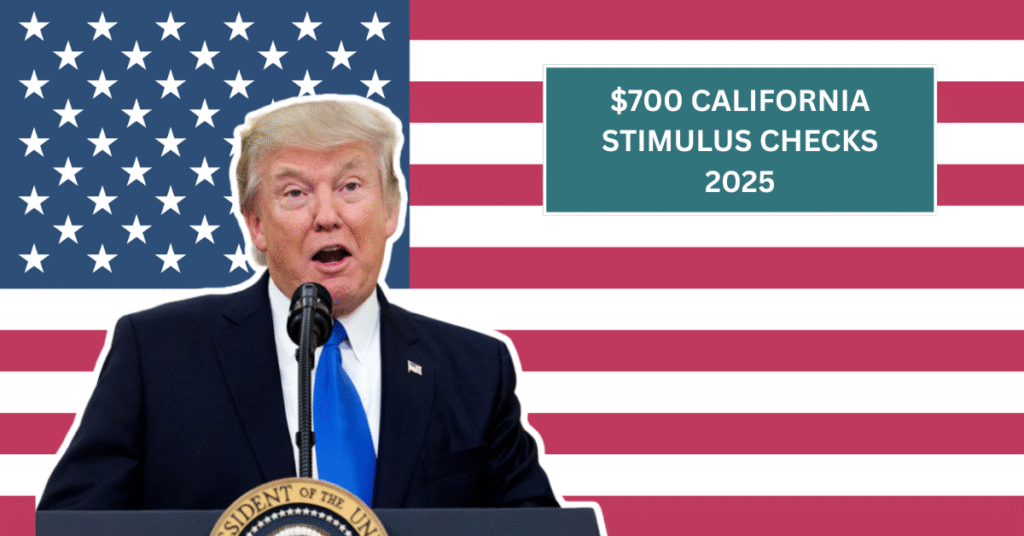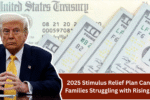
California residents are eagerly awaiting news about the $700 stimulus checks expected in 2025. This payment aims to provide financial support to people across the state, helping with living expenses during uncertain economic times. Many are curious if this check is truly for everyone or just a specific group.
In this article, we will explore whether the $700 stimulus is linked to California’s surplus tax rebate, inflation relief, or the middle-class refund program. We will also explain who qualifies, what the income limits are, residency requirements, and when the payments will likely be sent out. Let’s dive in!
Is the $700 Stimulus Check Related to California’s Surplus Tax Rebate?
This Article Includes
- 1 Is the $700 Stimulus Check Related to California’s Surplus Tax Rebate?
- 2 Is the Payment Also Part of Inflation Relief?
- 3 What About the Middle-Class Refund Program?
- 4 Who Is Eligible for the $700 California Stimulus Check?
- 5 Residency Requirements for the Stimulus Payment
- 6 Important Income Thresholds to Remember
- 7 When Will the $700 Stimulus Checks Be Paid?
- 8 How to Prepare for the Payment?
- 9 Will Everyone in California Get the $700 Stimulus Check?
- 10 Conclusion
The $700 stimulus check is indeed connected to California’s plan to use its budget surplus to help residents. The state government has seen a strong tax revenue growth, which means it has extra money. This extra money is part of the so-called surplus tax rebate, which aims to return some of this excess to tax payers as a form of relief.
This rebate acts as a stimulus to boost spending and ease financial pressures, especially with high inflation still affecting many households. So, this $700 is not just random; it’s a direct benefit from California’s better-than-expected budget condition.
Is the Payment Also Part of Inflation Relief?
Yes, the $700 stimulus check also serves as inflation relief. Inflation has increased prices on everyday items such as food, gas, and rent, hitting lower and middle-income families the hardest. The state government wants to address these rising costs by providing direct cash to residents, helping them manage their monthly budgets.
This payment is one way California is trying to make life easier for the people, by giving them more money to spend where it’s needed most. It’s a practical response to ongoing inflation concerns.
What About the Middle-Class Refund Program?
The middle-class refund program is related but different from the $700 stimulus check. It generally targets families and individuals within certain income limits, often focusing on moderate-income earners rather than all residents. However, the $700 payment is broader and could reach a wider group of Californians.
While the middle-class refund supports middle earners specifically, this $700 stimulus appears designed to assist a larger group, possibly including lower and middle-income households as well. Checking official updates will help confirm the exact overlap between these programs.
Who Is Eligible for the $700 California Stimulus Check?
Eligibility for the $700 stimulus depends on several factors, including income, residency, and tax filing status. California residents who filed state tax returns for the previous year will be considered first. This ensures that payments go to those who have declared their income and are legally recognised as residents.
The state has set income thresholds to focus aid on those who need it most. Typically, single filers with adjusted gross income below $75,000 and joint filers below $150,000 qualify. These limits ensure the stimulus targets low and middle-income earners without paying wealthy individuals.
Residency Requirements for the Stimulus Payment
Only California residents who lived in the state for most of the year will receive the $700 stimulus. This includes full-time residents who file taxes in California and possibly part-year residents depending on their income sources. Non-residents or those who only work in California but live elsewhere usually do not qualify.
The goal is to help those whose primary home and financial activity are in the state. The Franchise Tax Board (FTB) will verify residency using tax return information before issuing payments.
Important Income Thresholds to Remember
Income limits are a key part of this stimulus program. To summarise:
- Single filers making less than $75,000 adjusted gross income (AGI) usually qualify.
- Married or joint filers with combined AGI under $150,000 are eligible.
- Families with children could receive a higher total amount or additional benefits, depending on the program’s final rules.
These thresholds help ensure that assistance goes to those who need financial support while excluding high earners.
When Will the $700 Stimulus Checks Be Paid?
Payments are expected to start in early 2025. The state usually announces specific dates through the Franchise Tax Board’s website. Most payments are sent out automatically via direct deposit or paper checks if the state already has information on taxpayers.
Residents should keep an eye on official updates during the first quarter of 2025. Those who have signed up for notifications or regularly check in with the FTB will get the news faster. Tax refunds or stimulus payments often come in separate batches based on income and tax return processing times.
How to Prepare for the Payment?
To ensure you receive your $700 stimulus check smoothly, make sure your California tax return is filed and up to date. If you receive direct deposit for refunds, confirm that your bank details are current with the tax department.
If you do not file taxes because your income is below the filing threshold, check if California allows registration through a special form or online portal. Staying informed through official state channels will help you avoid missing out.
Will Everyone in California Get the $700 Stimulus Check?
While the $700 check is intended to reach a wide range of Californians, it is not strictly for everyone. Eligibility rules based on income, residency, and tax filing status mean some people will not qualify. High-income earners and non-residents typically are excluded.
Still, the state aims to cover most working and middle-class families who need extra help. The payment is a significant step in easing financial challenges and promoting economic stability.
Conclusion
The $700 California stimulus check coming in 2025 is a part of the state’s surplus tax rebate and inflation relief efforts. It is meant to support lower and middle-income residents dealing with rising living costs. Eligibility depends on income thresholds and residency, with payments expected early in the year.
By staying informed and filing taxes on time, many Californians can benefit from this extra financial help. Keep an eye on official announcements to know exactly when and how you will receive your stimulus payment.






